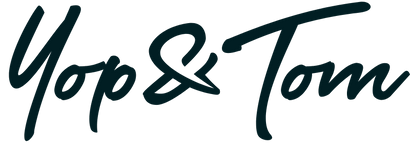Votre panier est vide
Section
The Easy Bullet Journal Setup Guide - 3 Simple Steps to Turn You Into a Bullet Journaler
Congratulations! You’re about to become a bullet journaler. Your new journal’s arrived in the mail and you’re ready to get started. But wait a second… you’ve got to set up your bullet journal first!
Here’s how to get started.
Bullet journal setup for beginners
When you’re new to the world of bullet journaling, it can be tempting to buy all the things. From every highlighter under the sun to washi tape, pens, pencils and so much more… There’s a lot out there to tempt you.
However, when you’re a beginner, setting up your bullet journal for the first time... we recommend keeping it simple.
Start with the basics:
- A dot grid journal in a design you love
- A pencil
- A writing pen
- A pack of colourful pens in a medium point size
That’s all you need.
Once you’ve set up your bullet journal and have a few weeks of practice under your belt, you’ll have a far better understanding of what you really need.
Because that’s the joy of bullet journaling. It’s 100% flexible to be tailored by you.

Step 1 - Practice rapid logging
Ever wished you could write as first as you can type? That’s where rapid logging comes in.
Rapid logging is the foundation of bullet journaling. Designed to make note writing easy and effective, rapid logging is a simple system that uses bullet points to get your thoughts down onto paper with speed.
Tasks
The most common type of rapid logging is tasks.
Items that need to be done are written next to an empty circle bullet point. That circle is then customised depending on the action taken next:
- Task is waiting to be actioned
X Task has been completed
> Task has been migrated to the future
< Task has been scheduled e.g. for a specific week
Task is no longer relevant
With rapid logging, writing a to-do list becomes easy and simple. You’re able to check the status of your project with a single glance.
Events
Rather than diving deep into the feelings behind your actions, Ryder Carrol (the inventor of bullet journaling) designed rapid logging to simply log the event itself.
The idea is that by making information logging quick and easy, we’re more likely to actually do it.
For this reason, events are simply noted with an open circle bullet point like so:
- Bought my first bullet journal
- Met Sara for a pottery class
- Had dinner with mum
However, sometimes it can be nice to capture the feeling you had in that moment. You might want to set aside a section of your journal for doodles, mementoes or writing reflections on your experiences.
Notes
Finally, notes are made with a simple dash:
- Try adding blue to the painting
- Tennis booking opens on
- Saturday
Would Northumberland be a good spot for the holiday?
This makes it super simple to log thoughts and ideas as soon as they happen. You could use rapid logging to make notes in class, capture ideas from a meeting or even store thoughts for creative projects you’re working on.
Remember, the idea is that you park these ideas to come back to them later. This could be in a few hours, days or even months time. You can take a deeper dive into them whenever you’re ready.
New to bullet journaling?
Get the ultimate beginner's guide to bullet journaling. Let's walk through your bullet journal setup together.

Step 2 - Set up your key
Your key is going to be your guide to your journal. And it’s the most important part of the bullet journal setup process.
Everything you note down in your journal, whether it’s to-do lists or memories, will be accompanied by a symbol. This symbol allows you to identify what each note means. Perhaps it’s a task, a family note, a work note or something totally different. Your key is where you keep track of these signals.
Bullet codes
On one side, add your bullet codes. These are the symbols you’ll be using for rapid logging.
Your bullet codes could follow the system suggested in step 1 above, or you could create something that feels more applicable to you. Perhaps you want to add a way to mark your favourite ideas or turn notes into events and actions.
Feel free to get creative with your bullet journal setup. It’s just for you and you can do it any way you want!
Color codes
If you’re using colour coding in your bullet journal, keep track of what each colour symbolises in your key. For example, you might like to mark work notes in blue or more urgent tasks in red.
You don’t have to decide right away. Just be sure to go back and add new colours to your key as you go.
Step 3 - Set up your index
Your bullet journal setup is almost complete!
The index is simply the contents page for your bullet journal. Except, unlike a traditional bullet journal, it doesn’t have to arranged sequentially.
Instead, you can build it as you work. You might start by adding your first collection e.g. Mood Trackers alongside its corresponding page numbers “3, 14, 22”. Then, you can add and index new collections as you create them.
Use your index to find certain thoughts, notes and ideas quickly and easily. Simply check the index, find the page number and away you go!
Choose a new journal
Bullet journal setup ideas
Now that you’ve set up your bullet journal, it’s up to you how you use it.Need some inspiration? These are some of our favourite collection ideas, feel free to mix and match as you wish:
Future log- store plans for the year ahead
Monthly log - track tasks for the coming month
Daily log - track tasks for each day
Goal log- make and set goals
Habit tracker - monitor your progress towards key goals
Mood journal - monitor your mood throughout the month
Moon journal - observe how your thoughts and emotions change with the moon cycle
Vacation plans- store trip ideas and activities
Playlist ideas - log your favourite songs and create new playlists
Creative notes - save big ideas for future actions
Memorable moments - save quotes and other thoughts to refer back to later
Yop & Tom Tip: If you want to keep your journal nice and organised, try using different title fonts to introduce each section.
However you use your bullet journal, you can use this bullet journal setup process to create an easy to use foundation that’ll service all your bullet journal needs!
Get the full beginners guide
This (free) beginner’s guide walks you through how to start bullet journaling. It’ll help you live a more intentional life, with everything you need to get started.
Overflowing with bullet journaling ideas, you’ve got everything you need to start bullet journaling today!


